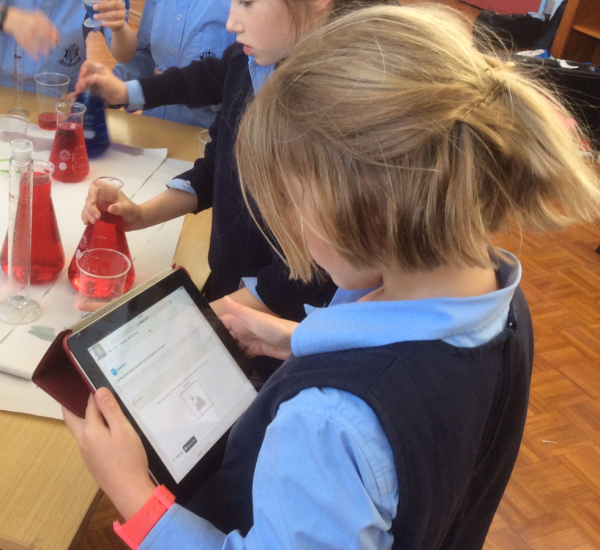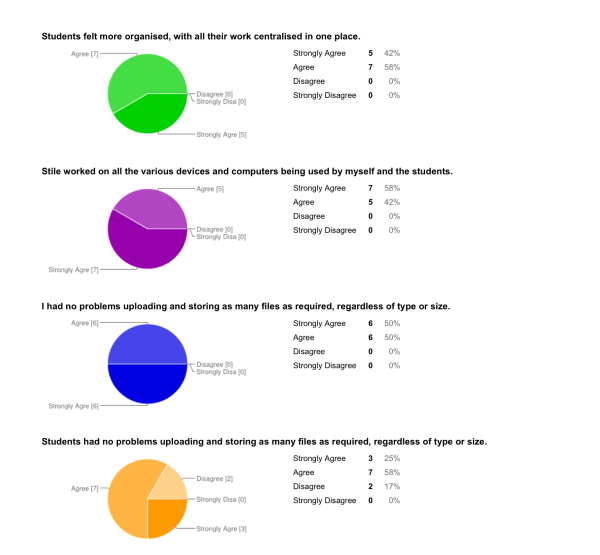We started using iPads in our classrooms in 2011. Since our adoption of our 1:1 iPad Program K – 6 , in January 2013, we have focussed on using the SAMR Model as an underlying scaffold. We have also tried to look at ourselves through the Apple lens of The Five Best Practices.
The journey is very much an ongoing one and while we have been delighted to see an amazing evolution take place there remains a sense of untapped possibilities. We are starting to imagine an environment which brings STEM / STEAM into play more inventively, more authentically, more naturally.
Our iPad devices are amazing in their versatility and their power to enable almost anything.
The iPad environment has pushed us in many new directions and has grown our capacity and capability. When I think back to the difficult environment pre iPad and the narrow possibilities on offer via the standard laptop environment I cringe remembering the difficulties and limitations. Our classrooms then were places where technology was much less an enabler and much more a challenge to implement effectively across a large group of children.
I am often surprised when educators and those running technology programs in schools insist that they need more powerful laptop devices. For our Primary School classrooms iPads provide more than enough capability. There are those odd remnants of Flash which elude us e.g. Scratch and some fully blown environments such as Minecraft, but these can be catered for with a few additional ancillary devices or via a rich range of iPad app options. I shy away from returning to the clunky laptop form factor when such great, powerful portability is available in the iPad form. Certainly in our Primary classrooms portability is key for so much which is occurring. I am also surprised at fixations that some have for keyboards. With the way technology is evolving I wonder whether hardware like keyboards will become as odd to us in the future as floppy disks have become.
Our iPads are actively used as tools for capturing learning, communication, creation, collaboration, curation and research. All our learning programs are benefitting from the infusion of easy technological capability and certainly iPads have delivered this brilliantly.
Recently we had a visit from a couple of schools interested to see how we are integrating technology. As an early adopter of iPads, in a 1:1 context, our school attracts a few visits each year. From my point of view these are great opportunities for us to benchmark ourselves and also to interact with other educators. When the schedule for visits is devised our intent is to show real activity as it is occurring naturally in classrooms. There is never a change to our timetable or to the activities on display.
Here is the schedule for this particular visit. A snapshot of activity across the school.
Visit Thursday 17 March
9:30 Meet and greet – (Primary/ ICT) – overview of the iPad Program
9:35 Year 1 Maths – Patterns and Algebra, Seesaw
9:40 Year 6 – G&T group – flipping learning within the classroom
9:45 Year K – Literacy groups – QR Codes, Maths – Explain Everything
9:55 Year 6 Science (PBL) – Chemistry – student designed experiments – recording and reflecting on learning – various apps e.g. Greenscreen, iMovie, slow motion, time lapse etc
10:05 Year 4 PDHPE – Stile interaction – Anti Bullying
10:15 Meet The Principal – morning tea – The Vision
10:35 Meet Librarian – Aurasma, QR Codes, eBooks, and our Apple Distinguished Educator – flipping learning, PE (physical education teacher) – looking at biomechanics / visual feedback apps on an iPad
10:55 Year 5 – (Year 5 Teachers) sharing experience – Book Creator recording learning in Science, Comic Book narrative of learning HSIE
11:10 Year 3 Maths – Multiplication / Division – various apps Stile, Book Creator, Explain Everything
11:20 Year 2 Maths – Patterns and Algebra, Matific and other apps
11:40 Year 5 – using iPads to learn another language – oral learning – Quizlet and Stile
11:50 End
Snapshots from some previous visits:
It is interesting to compare and contrast the experiences and consider whether the learning program has evolved. What is not clearly apparent, in this brief snapshot, is the increased sophistication via applications such as stopmotion, green screen and the integration of many other applications – along with the power that Stile has brought to enable the exchange between teacher and student (iTunes U offers some similar capability). Nor apparent is the increased sophistication and engagement of the users both students and teachers.
Change is our constant and as I have already suggested a shift towards the real integration of STEM / STEAM is already underway and I hope that this shift will become apparent in the sorts of experiences in play across the school in future visits. Here I am alluding to a maker culture which leverages technologies, thinking and skills – incorporating robotics, coding, Minecraft, 3D printing etc. All of these capabilities can be accommodated and enhanced in a dynamic iPad environment.
Authentic learning opportunities are also a major focus. PBL is already a natural part of what we do in our classrooms and we are pushing ourselves towards Challenge Based Learning across K-6 and towards publishing and interacting with broader audiences.



















